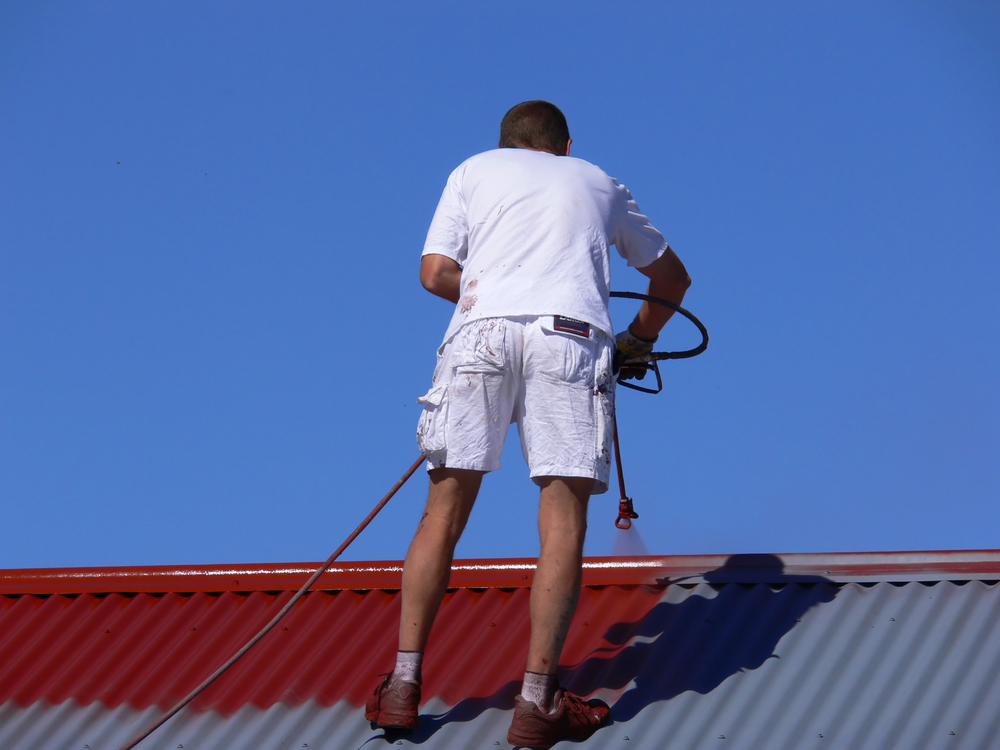Planning Aerial Installation? Consider the roof restoration too
“The beauty of a house lies in the quality of its roofing.”
–A wise man, probably.
It’s an undeniable fact, though, that roofs are the most attention-catching aspects of houses—there’s just something attractive about seeing a house with a properly done roof. Now imagine you just got yourself a fine new TV aerial or some other accessory which ideally should give your house a modern nice look, but there’s this awful looking roof glaring at the world; your house probably doesn’t look so nice anymore, does it?
Roof restoration is one of the few answers to the conundrum of having a bad roof. There are a number of reasons as to why you should opt for a roof restoration instead of waiting till things get so bad you have to do a full roof repair. In simpler terms, roof restoration is to your roof what automobile engine servicing is to your car — you could probably opt out, but the pros far outweigh the cons.
Why roof restoration?
There are a number of reasons why you should opt for the roof restoration;
- It costs less: Rather than wait till your roof gets to the point of no return, you would have more to gain by opting for a simple roof restoration. Not only does the actual service cost less, possibly by up to a significant 70%, a simple restoration also saves you some more cash as it’s chalked up to maintenance expenditure in your tax books.
- It keeps your roof looking pristine: Accessories like aerial installations and such always look better on a nice-looking unblemished roof in the background. It would serve you better to opt for a restoration instead of letting your roof go to waste. The aesthetic value of a good-looking roof cannot be overstated.
- Protection in case of emergencies: Repointing of ridge caps ensures that your roof is strong enough to survive whatever storms that may blow over your home.
- Avoid a potential ruinous collapse: Leaving your roof without a proper restoration every few years can easily become a recipe for disaster. Over time, factors such as weather and other natural elements will degrade your roof. A restoration may be all that stands between your safety and a potentially catastrophic roof collapse. Better safe than sorry, after all.
How to get roof restoration done?
Roof restoration is usually carried it in some simple steps;
- Safety Precautions: As per industry requirements, particular safety precautions are taken to prevent accidents. Ladders are angled at the recommended value, to provide the greatest possible balance, and sturdy safety harnesses are installed to prevent accidents in the events of falls.
- Inspection of the roof: Before any work commences, the roof is inspected to find damaged or loose tiles, and any biological growths. These damaged tiles lead to leakage and are picked out for replacement. Biological growths such as lichen, fungi, and algae are all picked out as they slowly reduce the structural integrity of the roof.
- Cleaning: The entire roof is then cleaned using a high-pressure water pump. The blaster is set to circa 4,000 psi to be able to sweep all debris, mould, and loose tiles away. Pressure cleaning a roof is not without its hazards, of course, most notorious being the possibility of having your tiles and shingles promptly smashed apart. Due to that, the roof may also be cleaned with sterilising chemical agents — biodegradable compounds that are strong enough to kill whatever biological growths that exist on your roof, and weak enough to not destroy the landscape of your home when flushed down.
- Repointing: Ridge tiles and gables are repointed to maintain ridge security. The repointing agent is usually flexible mortar which will not break apart even when your home goes through expansion and contraction caused by temperature changes.
- Sealing A sealer coat is applied to the entire roof. This coat, which may be applied with an airless paint device, gives maximum adhesion between the various components of your roof. Two or more acrylic membrane coatings may then be applied all over the roof, to provide a layer of protective covering.
- Painting: Before painting begins, it is important to check if the tiles are brittle to the touch, as that reduces the efficacy of the paint. If they are, a thin coat of bonding liquid is applied. The paint is then applied with a roof brush, in order to get a better film thickness and efficient finish.
While roof restoration looks to be particularly straightforward and the temptation to DIY lingers, it is advisable to leave the job to trained professionals — the accompanying risks may be just a tad too high for you to handle, and slight mistakes in the procedure may end up making your roof worse than it was.
Even ignoring other factors like reduced cost and risk, at the end of the day, roof restoration gets your roof back to its impeccable standards. What’s not to like?

